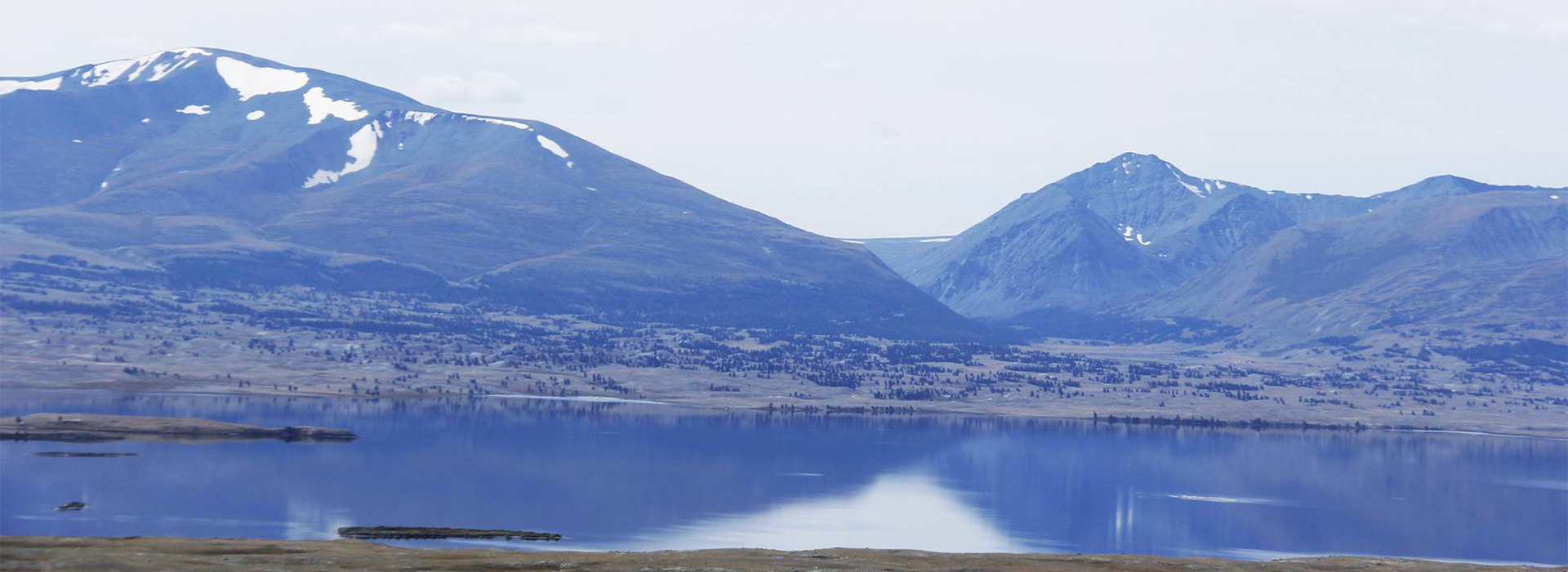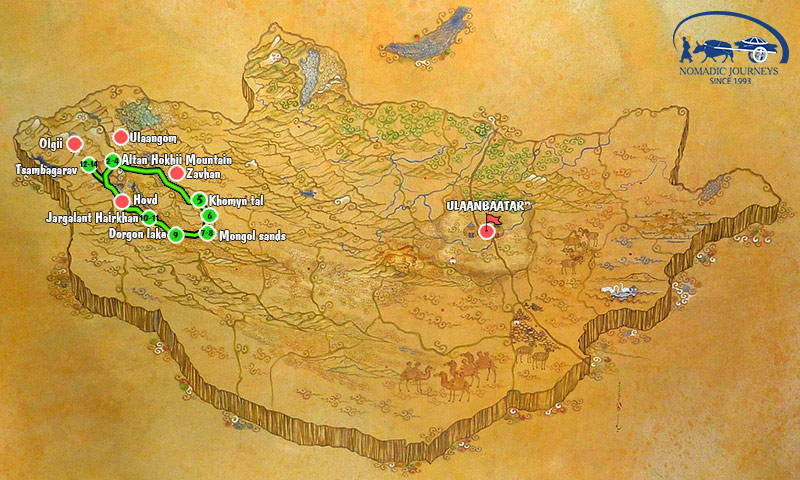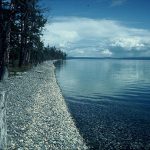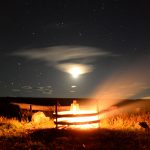
Altai Mountains, Great Lakes and Sands
Introduction
On this tour to Western Mongolia, you will visit the local eagle hunter nomad families in the Altai Mountain. Western Mongolia is the place you can see the snowcapped mountain in the distance while riding a camel on the sand dunes right next to a deep blue lake.
Western Mongolia is a timeless landscape, home to Mongolia’s most fascinating and diverse ethnic groups: Kazakhs with their thriving, age old eagle hunting tradition, descendants of various Oirat Mongol tribes, and Shamanist Tuvans. We will be hosted by these hardy herders on this dramatic journey to these rather unknown parts of Mongolia. The nomad’s livelihoods have been shaped by different life zones between the Gobi, Siberia and Chinese Xinjiang, dominated by the eternally snow-capped Altai Mountains. In the Great Lakes Basin, there are more extensive sand dunes than in the Gobi, and here they border directly on great saltwater and freshwater lakes with a backdrop of snowcapped peaks. These mountains are habitat to Snow Leopards and their main prey species, Siberian Ibex and Argali Sheep. Takhi wild horses have been reintroduced to the Khom plains and Saiga Antelopes still roam the dry steppes around Dörgön Lake. With the largest reed-beds in Central Asia, and a high diversity of landscapes, the Great Lakes Basin and the neighboring mountains also offer great birding.
BRIEF OUTLINE ITINERARY
We will be hosted by local nomadic families who participate in conservation efforts of WWF Mongolia and the TAKHI Association, both of whom practice people-centered conservation. Nomadic Journeys is supporting the community enterprise ’Altain Nuudelchin’ (Altai Nomads), facilitating the diversification of nomadic livelihoods without affecting their mobile lifestyle. Through this partnership we can offer an exclusive camping experience, denoting wilderness camps set up at each new location for your private use with uninterrupted views of pristine landscapes. Your visit directly contributes to the livelihoods of local herders who share their lives in this demanding environment with numerous predators.
You may arrive at or depart from the airports of Ulgii, Khovd or Ulaangom. This itinerary may be built from any of them.
| Trip Details |
|---|
| Altai Mountains and Great lakes |
| 17 Days / 16 Nights |
Trip Details
Day 1: Ulaanbaatar
Upon arrival by air or train to Ulaanbaatar, the capital city of Mongolia, you are met at the airport and transferred to your hotel. Your guide will be on stand-by.
Day 2: To Altan Hökhii Mountain
A three hour flight will take us to one of the regional airports at Khovd or Ulaangom. We drive for half a day to Altan Hökhii Mountain, a free-standing mountain in the central Mongolian Altai range. Altan Hökhii is facing the eternally snowcapped Tsambagarav Mountain National Park in Bayan-Ölgii, though separated from it by the Khovd River. We spend the first night at our private camp, which will be deployed at a considerable altitude, so even in July and August it might be quite cold at night. It is advisable to dress in layers.
Day 3-4: Altan Hökhii Mountain
The nomads here belong to a small ethnic group called Myangad – who were part of the larger western Mongolian Oirat federation. These are truly traditional herders, who migrate with pack camels between their seasonal pastures located at different elevations in the mountains and on the surrounding arid plains. The Myangad are famous for being good horse trainers, but face severe challenges herding livestock in close vicinity to numerous predators including Snow Leopards at higher altitudes and large numbers of wolves lower down. We will have the opportunity to learn about nomadic life. Excellent for day hikes. There is a fantastic large Ovoo (ritual cairn) on the top of Altan Hökhii Mountain (though hiking to the very top is reserved for men only, for religious sensitivities).
Day 5: To Khom
We drive full day southeast into Zavkhan province and the Khom plains, a semi-arid grassland with rather few nomads, surrounded by lakes, rivers and large sand dunes. Our camp will be set up next to a nomadic host family, that migrates between Baga Lake and the Seer Hills. The exact location is therefore dependent on the season. The French Takhi Association, a partner of WWF Mongolia, has been working on the reintroduction of Przewalski’s Horse (Equus Ferus Przewalski) between the Seer Hills and the Zavkhan River since 2004. Now the project has recently been transferred to a local NGO. Called takhi in Mongolian, the Przewalski’s horse is the last remaining species of wild horses. The story of its reintroduction is quite amazing. Made up from individuals gathered from zoo parks across Europe, the herds have been consolidated in France and brought to Mongolia in a spectacular airlift. We will meet with the team of Mongolian Takhi rangers.
Day 6: To Seer
Explore the plains, and the strictly protected reserve with the Takhi close to Zavkhan River. Visit the Seer Hills escarpment, and do some birding along the nearby Zavkhan River. At Seer we are likely to come across Mongolian Gazelles (Procapra Gutturosa), Black-tailed Gazelles (Gazella Subgutturosa) and have a reasonable chance to see Siberian Ibex (Capra Sibirica). Viewing of Takhi here is a fully private experience, as this is a truly remote corner of Mongolia.
Day 7-8: Mongol Sands and Lake
Explorations of the area from our private camp. If not already there we drive to the saltwater lake of Baga Nuur (Small Lake), immensely rich in bird life, spectacular even for non-birders. Large congregations of tens of thousands of Pallas’s Sandgrouse (Syrrhaptes Paradoxus) sometimes descend at this lake to drink and enjoy the water, as well as large numbers of Ruddy Shelduck (Tadorna Ferruginea). Adjacent to Baga Nuur are the biggest and longest sand dunes of Mongolia, Mongol Sands. They are more spectacular than the widely known Hongor Sands in South Gobi, as here the sands contrasts with rivers and lakes! The lakes expand in spring and shrink again at the end of summer, thus creating a variety of wetland habitats in otherwise arid surroundings. The Khom channel also marks the northernmost extension of Saxaul, a small, extremely salt-tolerant Gobi tree. We can expect to see many bird species restricted to the Eurasian steppes and desert biomes. Drive to nearby Dörgön Lake for birding. We can expect to see Pallas’s Fish Eagle (Haliaeetus Leucoryphus), White-tailed Eagle (H. Albicilla), Asian Dowitcher (Limnodromus Semipalmatus), White Spoonbill (Platalea Leucorodia), and Lesser Kestrel (Falco Naumanni). With some luck we will also identify the rare Relict Gull (Ichthyaetus Relictus). The lake harbors fish species such as the Altai Osman (Oreoleuciscus sp.) and the Mongolian Grayling, the largest species of Grayling (Thymallus Revirostris) in the world. Two thirds of the fish species are endemic. We will visit local nomads and their gers and livestock on foot or on camel back, to learn more about their livelihoods.
Day 9: Camel Ride across Mongol Sands
Today we will saddle up and traverse the giant sand dunes by camel (or on foot), enjoying majestic views over Dörgön Lake. We now enter Gobi Altai province, following the lake shore, which here forms a wonderful beach, something of a Mongolian River if you like. There is a spectacular ovoo here, named Janjin Ovoo, a ritual cairn, sacred to the locals. We are met by our vehicles mid day and drive back across the Chandmani plains. This is Saiga Antelope habitat where WWF Mongolia is working with local herding communities to protect this rare antelope. In prehistoric times millions of Saiga roamed the Eurasian plains with mammoths, wooly rhinos and bisons. Up until the 1800s this rather bizarre looking antelope with its characteristic bulbous nose, could still be found from the Carpathian Mountains to Mongolia and Dzungaria. Today only about 50,000 remain in Russia and Kazakhstan, with only a very small population in Mongolia. They are very skittish and hard to see, as they tend to run if they hear a vehicle within a distance of 2 or 3 kilometers. WWF is working here to motivate herders to act as Saiga rangers and protectors. We now re-enter the Khar Us Nuur National Park crossing the Dörgön Steppe westerly towards the village of Chandmani, famous for its claims of being the place of origin of throat singing (hömii). We continue toward Jargalant Hairkhan Mountain, which is usually snow-capped until July. Small stands of birch grow on its lower slopes. We drive around to the western side of the elongated mountain and set up our camp in one of the valleys, in an elevated place, facing Khar Us Lake. In mosquito free times, early and late in the season, we usually pitch camp at the lake itself. Many nomads will then have settled there.
Day 10-11: Jargalant Hairkhan Mountain
We hike into the Rashaant Valley of Jargalant Hairkhan Mountain. It is a unique valley which hosts a sacred spring, famous for its healing properties. Locals come here for eight types of traditional treatments. Poplars grow directly out of the rock, which is a wash out. The ravine is covered by ice and snow for most parts of the summer, and we will hike up to the end of it, where there are three small waterfalls, coming off the snow and glacial melt, producing a waterfall being 22 meters in a single drop.
With some luck we will see Siberian Ibex and Argali Sheep, the prey species of the Snow Leopard. This rare leopard finds excellent habitat here and WWF has placed remote sensor cameras to monitor the population. Our local hosts are partners in conservation programs of the area, with both WWF and the Snow Leopard Trust. Birds include Lammergeier (Gypaetus Barbatus), Chukar Partridge (Alectoris Chukar), Altai Snowcock (Tetraogallus Altaicus) and Wallcreeper (Tichodroma Muraria).
Day 12: To Tsambagarav Mountain National Park
We drive for half a day to reach the provincial capital Khovd, a small multi-ethnic town, inhabited by several Mongolian ethnic minorities, as well as by Kazakhs. We visit the museum on the main square and in the afternoon continue the drive to Tsambagarav Mountain. The options for our camp locations are dictated by the seasons here. Only in the summer months, do we set up camp at high elevations. Early and late in season we will camp at lower elevations such as Khar Khatuu Valley or at the foot of snow-capped Sair Mountain with its peak at 3990 meters above sea level.
Day 13-14: Tsambagarav Mountain National Park
Two days for explorations of this little traveled part of Bayan-Ölgii. We now are hosted by Kazakh nomads. The Kazakhs are a Turkic people who adhere to the Sunni Muslim faith. Their gers are distinct and more elaborate than Mongolian ones. They are actually called yurts, just as in Turkish, Russian, English and most other languages. Here locals speak Kazakh as a mother tongue although Mongolian is widespread. Ask anyone in Kazakhstan proper where the most cultural intact part of their country is located and they will point to this area, outside their country, in Mongolia. Learn more about Kazakh traditions and you will notice a big difference with the Mongol nomads. There are also Khalkha Mongol people as well as Uriankhai. Many local families here specialize in eagle hunting. Golden Eagles are captured and trained to hunt foxes from horseback in the winter months. During the summer, you may see the eagles perched and tied around the family yurts. We will explore the surrounding mountain area.
Day 15: To Ulaanbaatar
We drive a few hours to the provincial capital Ölgii (or Khovd) in time for the flight to Ulaanbaatar. If there is time, we will visit local shops for handicraft. In Ölgii and Khovd you will see mosques rather than Buddhist temples and the market is called bazaar. In Hovd both cultures exist side-by-side. Fly to Ulaanbaatar (3-4 hours). We will be met at the airport and transferred to the hotel.
Day 16: Ulaanbaatar
We depart mid-morning for a visit to Gandan Monastery, which is a Yellow Hat (Gelug-pa) lamasery. It has survived a fair bit of the purges in the 1930s and was already reopened during socialist times, to portray religious freedom for visiting tourists from Cuba, Hungary, and the USSR. At the time tourists were invited to take photos. Today, photos are restricted at this, at times very lively, praying site. We continue to Sukhbaatar Square and visit the National Museum of Mongolia.
Day 17: Departure
Transfer to the airport or railway station and depart homewards or to your next destination.

DATES 2023 ex Ulaanbaatar:
Daily mid June to mid August.
PRICE 2023 ex Ulaanbaatar:
2 – 8 members: USD 5090 per person
Single Supplement (16n): USD 1220
Practicalities
Transport:
The majority of travelers join from Ulan Bator by domestic flights to/from Hovd or Olgii airports. We will then tour the region by jeeps, and have a Russian 4wd minivan as a support vehicle.
Accommodation:
During this trip we will stay in spacious tentipis, with foldable bed-cots. We take along a Mongolian tent to serve as our mobile restaurant, as well as showers and compost toilets housed in traditional marquee style tents. If the flight schedules are unfavourable, we will stay in a small two-star hotel in Hovd or Ölgii.
Staff:
An English-speaking Mongolian guide will accompany you at all times.
Other language guides such as Russian, French, German, Italian, Korean etc. available at additional cost, upon request. When traveling across Bayan-Ölgii province there will be a Kazakh speaking guide.
Meals:
Our cook will prepare the meals. We pride ourselves in having exellent cooks adept at both western and Mongolian cooking on our trips. There is no problem accommodating vegetarians on our trips. We can usually buy fresh milk and yogurt from local herdsmen.
Includes:
Guide, all meals outside Ulaanbaatar. All overnights a hotel and in tents. All local transport and entrance fees. Domestic flight tickets.
Excludes:
Beverages. Lunch and dinners in Ulaanbaatar. Air or train tickets in and out Mongolia.
What our guests say
We appreciate your feedback about our tours and services.
You might also enjoy these trips






